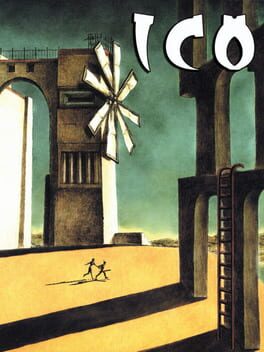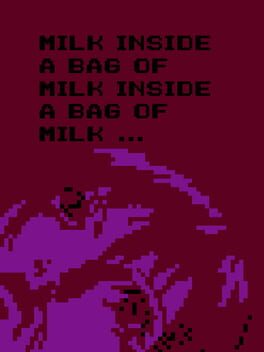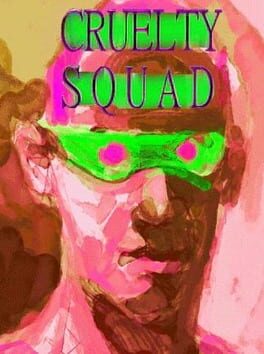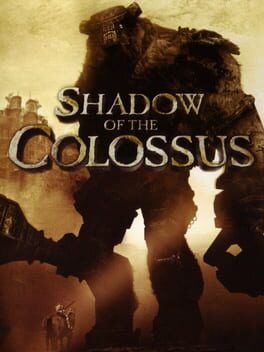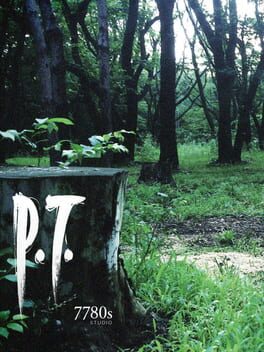sliceofzura
Bio
somewhere in my dreams
somewhere in my dreams
Badges

Trend Setter
Gained 50+ followers

Pinged
Mentioned by another user

GOTY '22
Participated in the 2022 Game of the Year Event

Well Written
Gained 10+ likes on a single review

Liked
Gained 10+ total review likes

Donor
Liked 50+ reviews / lists

Popular
Gained 15+ followers

2 Years of Service
Being part of the Backloggd community for 2 years

Best Friends
Become mutual friends with at least 3 others

Noticed
Gained 3+ followers
Favorite Games
087
Total Games Played
004
Played in 2024
000
Games Backloggd
Recently Played See More
Recently Reviewed See More
what if you could suplex a dude carrying a chainsaw that looks like he's from a 70s slasher film, what about roundhouse kicking monsters straight from John Carpenter's horror classic "the thing", while simultaneously repositioning and adjusting yourself to drain bullets into hordes of enemies as you eventually finish off everyone you can see. but there's not a single moment of rest in this exhilaration of a game. every encounter demands you to think differently. what worked before might not work now, resident evil 4's novelty never really wears off despite some hiccups. the game's crazy nonsense keeps one upping itself, you fought a ridiculous-looking chained wolverine? how about you fight two of them at once in a tight corridor. how about you battle your way through catapults in a broody castle controlled by medieval cultists with flails and crossbows. why not face two giant golems in a lava pit pool with a giant deathtrap in the middle. no supply would be left, you really do need everything you could find. I really haven't played a game which constantly escalates the way RE4 does. it grips you on the shoulder like a sudden jolt and continues to squeeze you until the end, injecting as much adrenaline into your system as it possibly can without feeling exhausting. Mikami thought, why not force the player to adapt in every situation, every second of gameplay, let's force the player to actually think. towards the end, the freshness of its gameplay loop does wear off but it arrives just in time where the game decides to end, this is a timeless game.
I am so glad I played the PS2 version in all of its gorgeous aesthetic.
Fumito Ueda games are always an aesthetical achievement. The ability to carve emotional landscapes which feel so ethereal is stunning. The overwhelming bloom lighting and vast rolling hills and plains are incredibly immersive, the muted and washed tones of green, brown and gray envelopes the feeling of the game, as this desolate and cold world despite its blinding sheen when you trot along the flowing environment on your horse towards your next Colossi. The world of SOTC is purposely empty, meticulously designed, which further helps to push the feelings of cold illumination, intriguing mystique , two juxtaposing ideas, liminality where there exists nothing but the Colossi. You play as “Wander”, making your way to each Colossus and slowly putting an end to what little life remains including lizards which you also kill because it makes you stronger. As the player we directly contribute to Wanders’ violence even though ultimately Wander makes the decision to kill every Colossi in order to bring back Mono. At the end of the game Wander is forced to face his consequences and it ends up affecting us as the player as well, where we decay into the physical embodiment of Dormin himself, this is the result of Wanders actions on a personal level, was it really worth killing the Colossi? Their shrieking roars which we start to find empathy for. The game deliberately throws nuance to this question adding a moral facet. While the mixed emotions of the colossi and their enigmatic and curious state show that perhaps ending such a monolithic life form is not the right choice, the end of the game shows Mono alongside deers, doves, flora and fauna indicating rebirth and tenderness. Perhaps banishing Dormin tore away his aura over the forbidden lands which brought back warmth and serenity to what was an almost lifeless domain. SOTC is not only about the consequences of your violent actions and the idea of futility but also accepting what can’t be changed.
Fumito Ueda games are always an aesthetical achievement. The ability to carve emotional landscapes which feel so ethereal is stunning. The overwhelming bloom lighting and vast rolling hills and plains are incredibly immersive, the muted and washed tones of green, brown and gray envelopes the feeling of the game, as this desolate and cold world despite its blinding sheen when you trot along the flowing environment on your horse towards your next Colossi. The world of SOTC is purposely empty, meticulously designed, which further helps to push the feelings of cold illumination, intriguing mystique , two juxtaposing ideas, liminality where there exists nothing but the Colossi. You play as “Wander”, making your way to each Colossus and slowly putting an end to what little life remains including lizards which you also kill because it makes you stronger. As the player we directly contribute to Wanders’ violence even though ultimately Wander makes the decision to kill every Colossi in order to bring back Mono. At the end of the game Wander is forced to face his consequences and it ends up affecting us as the player as well, where we decay into the physical embodiment of Dormin himself, this is the result of Wanders actions on a personal level, was it really worth killing the Colossi? Their shrieking roars which we start to find empathy for. The game deliberately throws nuance to this question adding a moral facet. While the mixed emotions of the colossi and their enigmatic and curious state show that perhaps ending such a monolithic life form is not the right choice, the end of the game shows Mono alongside deers, doves, flora and fauna indicating rebirth and tenderness. Perhaps banishing Dormin tore away his aura over the forbidden lands which brought back warmth and serenity to what was an almost lifeless domain. SOTC is not only about the consequences of your violent actions and the idea of futility but also accepting what can’t be changed.
Hallway after hallway, the inflicting nausea never fades away. You enter into loops upon loops, the repetitive use of a single hallway is able to instill a state of paranoia, a throbbing headache which will not leave. The slow but steady descent haunts you as you try to make sense of what events have occurred or are occurring but never arrive on a concrete conclusion. Every step you take is one of fear, you never know what can or will happen next, a cycle of fear which never stops. Its use of visual imagery such as dangling fridges,scattered miscellaneous items, and radio messages creates a masterclass of immersion and horror which exceedingly few games manage to perform. Every new loop is simultaneously a sigh of relief and an impending feeling of doom as you force yourself to face the “same” hallway. Every stylistic choice presented is to mess with your brain, leave you with more questions. It feels so meticulously designed.

